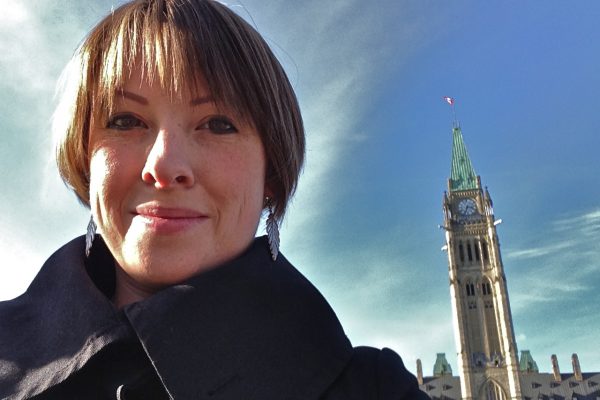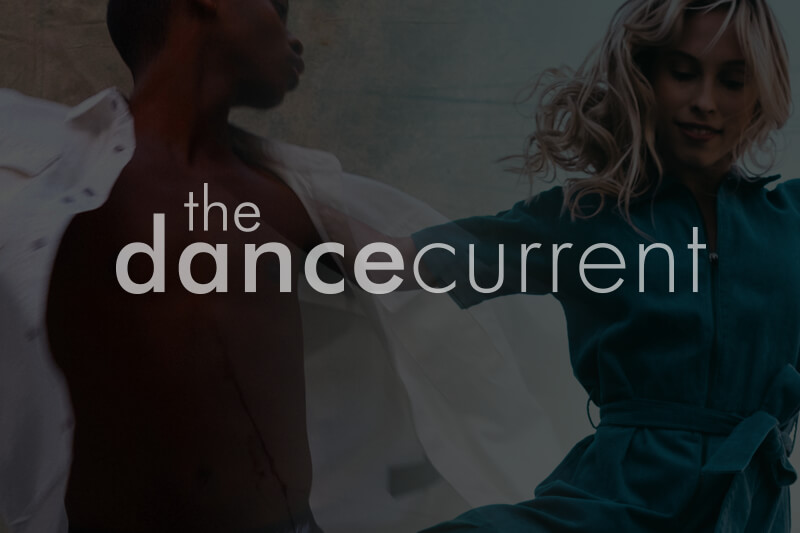When COVID-19 boarded up theatres and studios across Canada, thousands of artists lost significant portions of their incomes. But it wasn’t just individuals; the pandemic also short-circuited earned revenue streams for several cultural organizations. Grant-makers then became a vital lifeline to support these organizations that could no longer rely on box-office sales or fundraising galas to balance their budgets.
Grants, both public and private, make up a significant portion of funding for Canadian artists and arts organizations. The landscape of funders supporting arts and culture initiatives is complex and includes arts councils at local, provincial and national levels; government departments and ministries; community foundations; as well as family and corporate foundations.
Recognizing the need to act quickly, many organizations created new programs and funding streams to respond to financial pressures caused by the pandemic. Initiatives like Vancouver Foundation’s Community Response Fund and Toronto Arts Council’s TOArtist COVID-19 Response Fund directly addressed emergent needs within arts communities, and the Government of Canada relied on the existing granting infrastructure of the Canada Council for the Arts, Canadian Heritage, Telefilm Canada and the Canada Media Fund to disperse $500 million in emergency aid to the cultural sector.
In addition to this influx, many grantors also provided support by adjusting their usual demands on grant recipients. Reporting deadlines were extended; application forms were shortened and streamlined; funds were released earlier than scheduled; and greater flexibility was provided in how money was spent. By helping organizations respond to COVID-19, funders were shifting decades-long practices that tend to place huge administrative burdens on small organizations and have served to maintain the obvious unequal power dynamics between funders and fund recipients. So, can these emergency measures designed to just get organizations through the crisis actually change these long-standing issues?
I spoke with three professionals from very different organizations about what they think the legacy of COVID-19 will be on the relationship between funders and those they support and whether they think these positive shifts in granting practices will continue longterm. Aine McGlynn is the COO of The Good Partnership, an organization that supports the fundraising and operational needs of small and medium-sized non-profits across Canada. Megan Tate is the director of community grants at The Winnipeg Foundation, founded in 1921 and – according to its website – Canada’s oldest community foundation, which supports a range of causes and projects that benefit Manitobans. Soraya Peerbaye is the program officer for dance at the Ontario Arts Council. (For transparency, I’d like to note that The Dance Current is funded in part through an Ontario Arts Council operating grant.) Despite their different positions in the granting ecosystem, there was an overall sense that meaningful reforms are possible if communities keep up the pressure.
Aine McGlynn on funder privilege and the potential for backsliding to bad practices
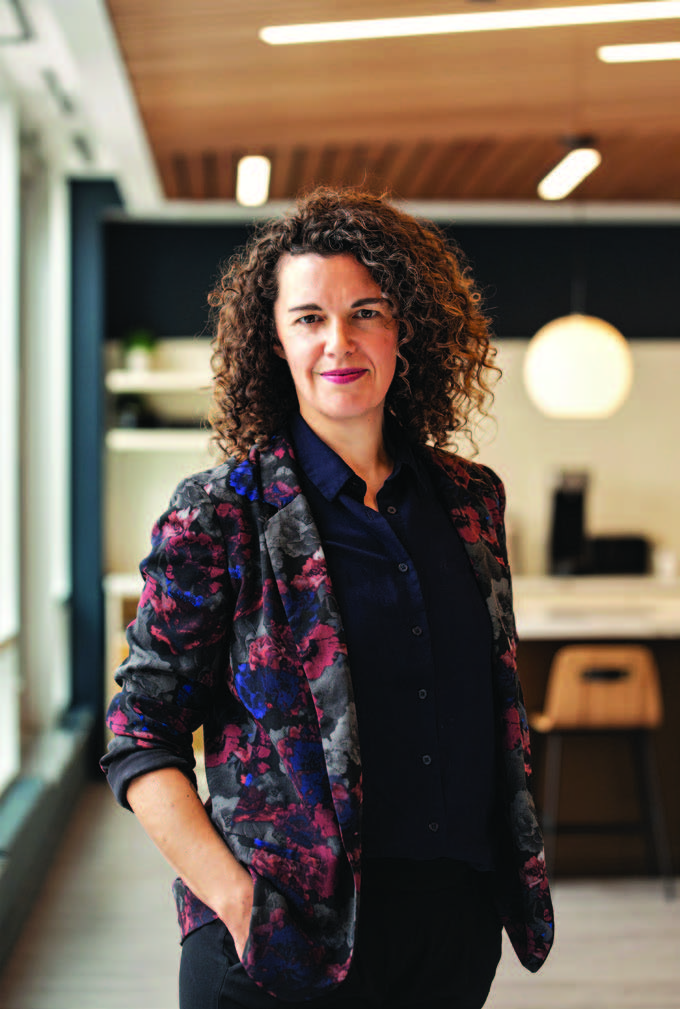
Kallee Lins: What were you seeing as the biggest issues in the funder-fundee relationship prior to the pandemic?
Aine McGlynn: Well, the biggest issues … I don’t know where to start. I can give you some examples of things that were challenging from the actual technical process by which [funders] invite people to submit grants all the way to the funding strategy. A really pedantic, simple example of difficult practices is not providing your potential grantees with a list of the questions that are going to be in the grant. It’s a really simple thing. Most people don’t compose their grant applications actually in your grant submission tool; they do so in collaborative documents because they get feedback from teams. So, when you don’t provide a list of those questions and you only provide the application, you make things infinitely more difficult for your grantees to just even fill out an application.
I think grantors don’t often spend enough time understanding what kind of data the grantee is collecting as a part of their normal course of defining their progress against their mission. Instead, they consistently impose their own evaluation metrics, their own KPIs [key performance indicators] – which is understandable, but they do so onto a small organization that all of a sudden now has to completely revisit their evaluation tools. Doing that work is difficult anyway, so if an organization has that done for themselves, and then they’re asked to redo [their evaluation] for every single granting relationship, you can imagine the kind of nightmare that creates.
I hope that funders have their ears to the ground a little bit more so than they might have in the past. Perhaps as a result of COVID but also, I think, as a result of the revolution around racial justice, that there is significant unlearning to do in terms of the funding decisions that are made and how those decisions are made.
– Aine McGlynn
I think that there’s still an unequal power dynamic, obviously, between the funders and those that they’re funding. And I think that there’s more than a little bit of paternalism and a ‘we know best’ sort of top-down direction from the funder down to the organization. So, I think that dynamic continues to plague the sector. … I think that it stifles the voices of those who are supposed to be the beneficiaries of charitable efforts. If we’re not building the priorities from the ground up and from their lived experience, but instead from some kind of disconnected, academic, largely white, largely wealthy world view, like, what are we going to get?
KL: What have you seen – in working with all of the clients that you work with – in terms of the kinds of adaptations and accommodations that have been offered during COVID-19?
AM: Internally as a team, we communicate via Slack and we’ve created a channel called COVID Kindness where we’re popping in stories of funders responding really beautifully to our clients’ request to, for example, change programming funds to unrestricted funds, deciding to release next [year’s disbursement] or the year after as funds now and unrestricting them, proactively reaching out to their grantees with additional supports or additional emergency funds. All of those are the right things to be doing.
I would say that a lot of the applications that we’ve seen as well, where there’s COVIDspecific ones, the applications are just simplified. It does make you think, like, if I was advising funders or speaking to funders, I’d say, ‘Do an audit of all of your intake tools. And tell me, what is the data you actually look at and you actually use to make your decisions? Because I guarantee you there are about 10 fields that you never even look at.’ I think the fact that funders are releasing money without asking these kinds of questions, [shows] you don’t have to ask these kinds of questions to get money into the hands of the organizations who know best what to do with it.
KL: Yeah. In my mind, it’s really broken down that assumption that more data equals greater trust. So, how many of these measures do you think will actually stick and persist post-pandemic?
AM: If I’m really honest, I don’t think any of them will. I think we’re going to go quickly back to the way things were. I don’t know. Maybe I’m feeling a bit cynical today. But there’s no real impetus. There is no larger accountability that funders have to live up to with respect to their funding practices. I hope that they recognize that there is an advantage to pace, that they didn’t necessarily need to have all of their review committee members sitting around the table once every six months in order to make funding decisions; they could do this rapidly and quickly. And I would love to think that they enjoyed the pace of that and they saw that as productive.
KL: What do you think the legacy of COVID-19 will be on the funder-fundee relationship?
AM: I hope that funders have their ears to the ground a little bit more so than they might have in the past. Perhaps as a result of COVID but also, I think, as a result of the revolution around racial justice, that there is significant unlearning to do in terms of the funding decisions that are made and how those decisions are made. I think that the ones that are prepared to listen with humility, and lead with trust, will be ones who continue to, to move towards more unrestricted funds, quicker decisions and more trust-based philanthropy. That’s the hardest barrier to cross.
Megan Tate on rapid-response possibilities and the limits of donor-supported funds
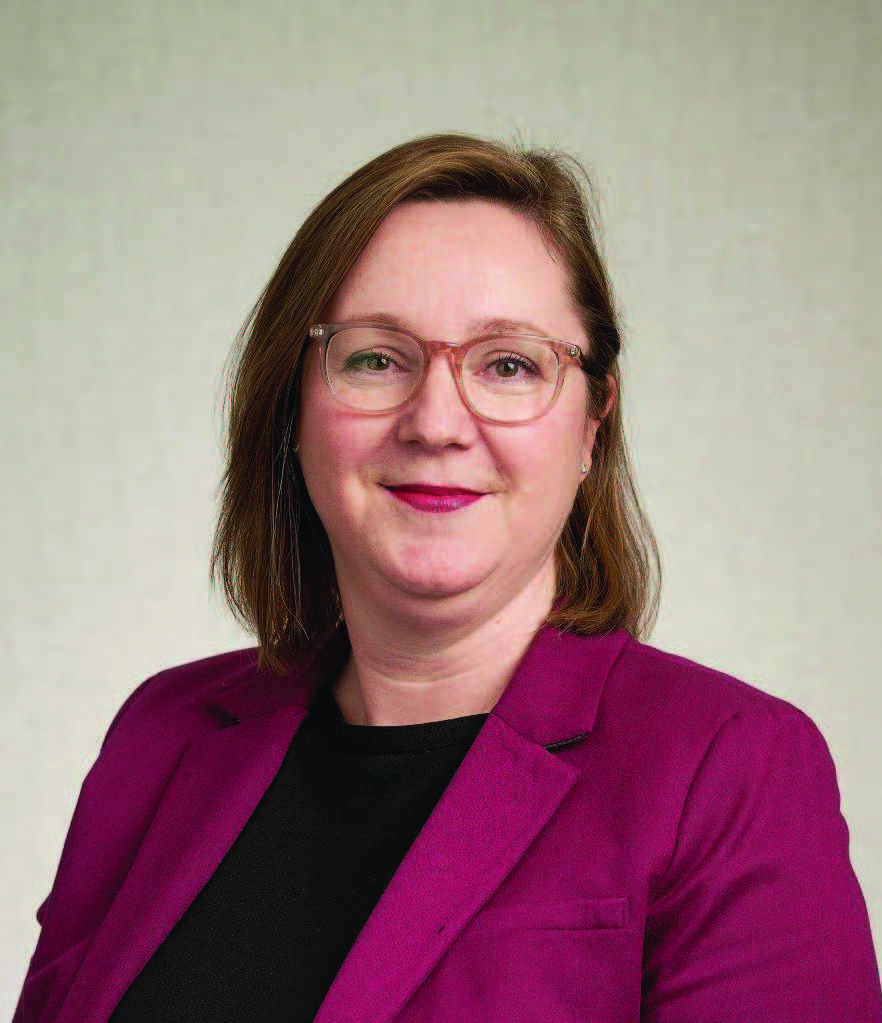
KL: Thinking about grant-making processes, how would you describe The Winnipeg Foundation’s priorities prior to the pandemic? Were there any changes or reforms in the works before COVID-19?
Megan Tate: We surveyed our grantees because we wanted to hear back from them how we were doing. For the most part, they thought that we were doing OK, but they did have some suggestions for how we could improve our processes from application through to final decision and beyond. We were in the process of thinking about how we could implement some of those changes.
I always talk about something; I call it ‘right-sized grant-making.’ So, as a community foundation, we grant to the full spectrum of community organizations, everything from community services to, of course, arts and culture, but we also support a wide range of projects. And currently, if you’re asking for $5,000 to put on a small festival or you’re asking for $100,000 to launch a pilot program, the application process is kind of the same. We were starting to have conversations about what that might look like in terms of exactly, as I said, right-sized grant-making; that the information we require for that $5,000 request might be different than what we require for that $100,000 request or a multi-year request. Where we were at was really in the listening to grantee stage, the internal conversation stage, the selecting the grants management system stage. Um, and then COVID hit.
KL: How did the foundation respond to pressures in the community caused by COVID-19, and specifically, what were those kinds of accommodations and adaptations that were extended to them?
MT: First, we quickly proactively made grants to local community organizations that we knew were on the front line of serving our most vulnerable community members. You know, those addressing shelter, food security, those kinds of things. And the second thing that we did was we reached out to all of our grantees to say, we recognize that your circumstances have changed, so if you have an outstanding grant with The Winnipeg Foundation, we’re going to be really flexible with that outstanding grant commitment. That means we recognize the project that we supported might get put on pause, and you’re not able to complete it in the original timelines and that’s totally fine but also that your organization, because of COVID, might have more pressing needs than the project that was funded.
We trust that [organizations] know what is best for them to be able to do the work that they do in their community.
– Megan Tate
We continue to provide emergency support for those front-line organizations, but we knew that the entire charitable sector was hurting. It just hurts my heart because, you know, performances were being cancelled, gala fundraising events were being cancelled. Particularly for the arts and culture community, their earned revenue is a significant portion of their annual budget and so with that gone, it’s challenging. Also, for larger arts institutions, they often have their own capital. Our Royal Winnipeg Ballet has a whole building that they still have to take care of.
In May, we launched something called stabilization grants. Any local charitable organization, or a national organization that had a local presence, could apply for up to $50,000 either to cover revenue that they lost as a result of COVID-19 or to support any additional costs that they incurred because of COVID-19, so that’s everything from having to set staff up to work remotely from home to additional cleaning supplies and PPE. It really depended on the organization. We launched that program in May. Applications were due at the end of May, and we made our decisions at the end of June. The goal was a really quick turnaround because we knew organizations were being really challenged financially by this. Organizations had to answer four or five questions. We didn’t ask for any attachments. We didn’t ask for budgets. We didn’t ask for audited financial statements. It was very streamlined and the work was on our end using our existing knowledge of community organizations.
KL: Do you think any of those new processes may stick around?
MT: I hope so. I think, in terms of the flexibility and the nimbleness, that will stay. We turn 100 in 2021, so that means we have generations of discretionary funds that have been entrusted with us, and that does allow us to be really nimble and to be able to respond to whatever the most pressing, urgent need is in our community. So that’s always been an advantage.
The turnaround time, I would love to say we could keep that. At the end of the day, we were trusted by donors to steward those funds, and so there is always going to be that due diligence component on our end to make sure we’re stewarding those gifts. I think there’ll be a happy medium in that [we’ll] be able to respond maybe more quickly than we have traditionally. And I think that’s where the rightsized grant-making comes in as well.
KL: What do you think the legacy of this moment will be on that grantor-grantee relationship?
MT: I hope they don’t become clichés, but we talk about trust-based grant-making as well, and those trusting relationships that we have with community organizations. We trust that they know what is best for them to be able to do the work that they do in their community. That has become even more front and centre in our work, and I think that that will be a lasting legacy of this.
I think community organizations, now they know what funders can do. That genie’s out of the bottle, right? I think that community organizations are going to come to expect that from their funding partners. So, I do think that’ll be a legacy.
Soraya Peerbaye on the intersectional challenges of COVID-19
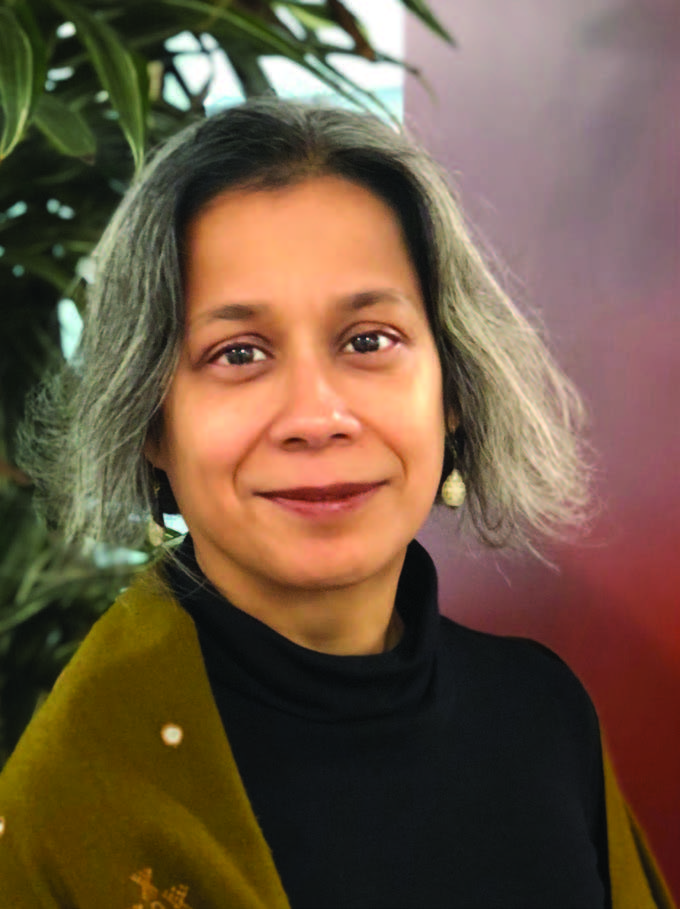
Peerbaye / Photo courtesy of the Ontario Arts Council
KL: In your role as program officer, how have you been supporting dance communities throughout the pandemic?
Soraya Peerbaye: With dance in particular -– because it is contact-based, it is proximitybased, it is all about, you know, physical interaction between the artists and with the public -– I think there was very much a sense of an existential crisis. I would say that for me, and the program officers I work with, it was both a role of consulting but also, you know, being available to really listen and to really witness what artists were experiencing. So, I think the role has been to be as available as possible, knowing that artists are making incredibly time-sensitive decisions in a situation where the information is changing by the day.
KL: Can you tell me about some of those specific accommodations that were provided to grant recipients?
SP: Well, the first thing we did in April was to extend all the spring project program deadlines by two weeks to provide additional time for applicants to adjust their plans and particularly to develop any COVID-19 contingency plans to their applications. We released operating grants for organizations in the OAC operating grant stream to respond to the cash flow that these organizations needed to sustain their operations.
For project programs, we supported artists who needed to postpone their activity, who needed to change it –- sometimes radically. We allowed them to redirect funds to artists’ fees, to non-recoverable costs, to cancellations costs and invited contingency plans as part of new project applications.
We’ve also recognized that this is a time of collective learning, of re-envisioning what can be done, that even the contingency plans that someone may formulate at the time of the application may, the next day, have to change. As the situation changes, and changes again, we have been charging peer assessors to review those contingency plans in a spirit of generosity, respect and trust. If they’re supporting their project, it’s also because they’re trusting the artists to have an imaginative, creative capacity to respond to different circumstances.
We also immediately began developing the Arts Response Initiative (ARI). OAC redirected funds from the Chalmers Arts Fellowship, as well as market development projects and market development travel assistance programs, to help Ontario artists and arts organizations respond to the challenges posed by the pandemic.
We’re learning a lot from that in terms of reading these applications now. That’s the kind of program that will help us reimagine how we can serve. Programs are continuing to support arts creation, production and presentation, or dissemination and arts engagement activities, many with expanded eligibility related to COVID. We also began participation in a survey to gather high level indicators on the early impact of COVID-19 on the OAC funded organizations. That was the beginning of really focusing on the immediate needs of the arts community by learning as much as we could about the issues they were facing and changing our processes to offer as much flexibility as possible.
I think crisis response really foregrounds equity responsiveness; it asks us how to support artists, arts organizations and the arts sector in building resiliency in the long term.
– Soraya Peerbaye
KL: Do you have a sense that any of those measures will continue on in the future in some form?
SP: Well, you know, one of the things that was disrupted by COVID was actually our strategic plan. We planned to begin working on the next strategic planning process this past spring when the pandemic changed everything, but that process is going to be restarting now. And I think, if in a strange way, the timing is fortuitous in that it allows us to really engage with the community to talk about the role that we play, what it is that artists and arts organizations and communities are wanting us to play. I would say we are having a lot of conversations about what elements of crisis response are essential to grant-making in all circumstances.
The ARI was designed to be as simple as we could make it. We continue to think about that, how we simplify our processes, how we streamline our questions … as we try to alleviate the stress that artists and arts practitioners are experiencing. A conversation that I’m really interested in is the function of the application. And I think we’re really asking ourselves, what is it that we need to know through application processes, not only to assess applications but to really understand the field in which our programs operate given that that field is now wholly transformed.
KL: Something I’ve been thinking about is, it’s not just COVID that we’re experiencing at this moment, but of course there’s such a heightened sensitivity to equity concerns within organizations and how that’s embedded in organizational infrastructure. So, I’m wondering if you could speak to how that’s currently being reflected in the conversations that the OAC is having right now.
SP: We do think of this crisis as an intersectional crisis. I think COVID-19 is inextricably linked with what happened afterwards with the Black Lives Matter movement. And the conversations that are going on between funding agencies is very much about how COVID is refocusing our attention. I think crisis response really foregrounds equity responsiveness; it asks us how to support artists, arts organizations and the arts sector in building resiliency in the long term. And resiliency is about a lot of things. In part it’s about interdependence. It’s not necessarily that these were new or different considerations before, but the way they are piercing us, you know, the sharp focus into which they’re coming, I think is quite high.
KL: What do you think the legacy of COVID-19 and this moment that we’re in will be on the funder-fundee relationship going forward?
SP: How do we carry this forward? There’s that long-standing equity approach that when you reach people on the margins, you’re reaching everyone. I think that’s a conversation that has deepened and widened during this time. I think also how it’s not only a crisis. It is also a fundamental [moment] of building meaningful relationships between the funding agencies and the communities that we serve. [Our work] has to recognize that human dimension, the dimension of how these programs function in an applicant’s daily life, in questions of survival and thriving.
These conversations have been edited for clarity.

